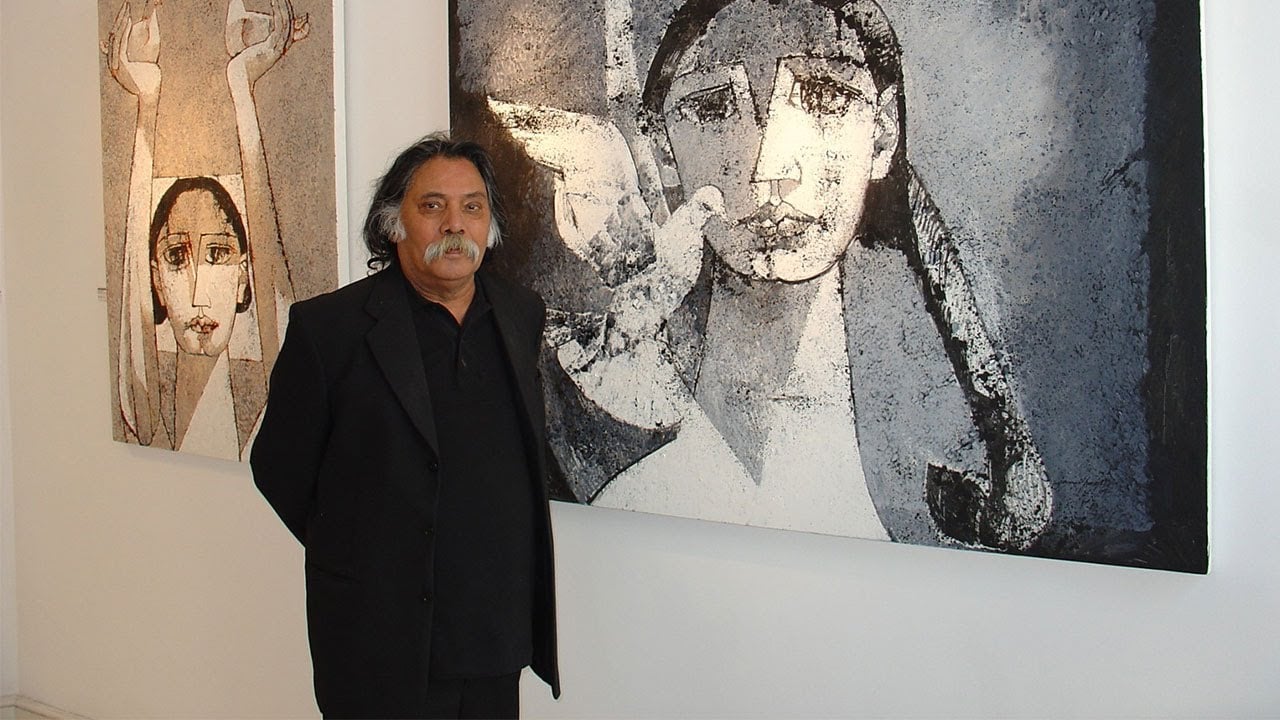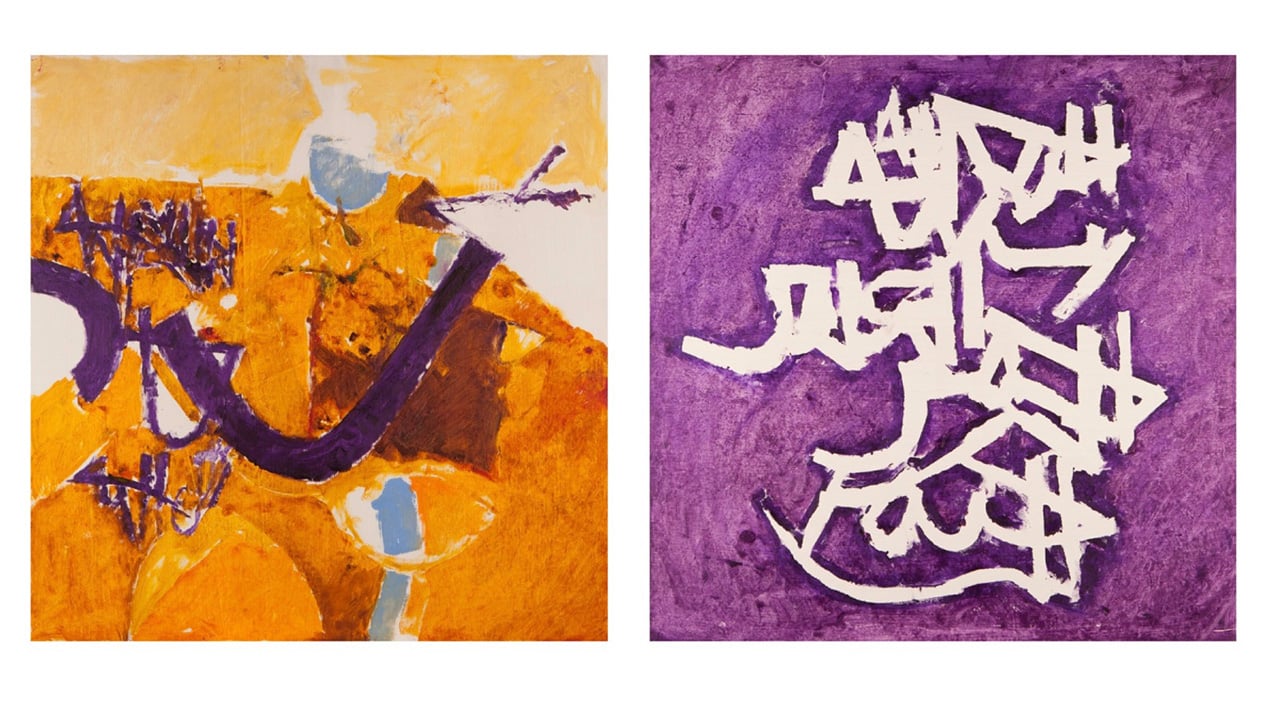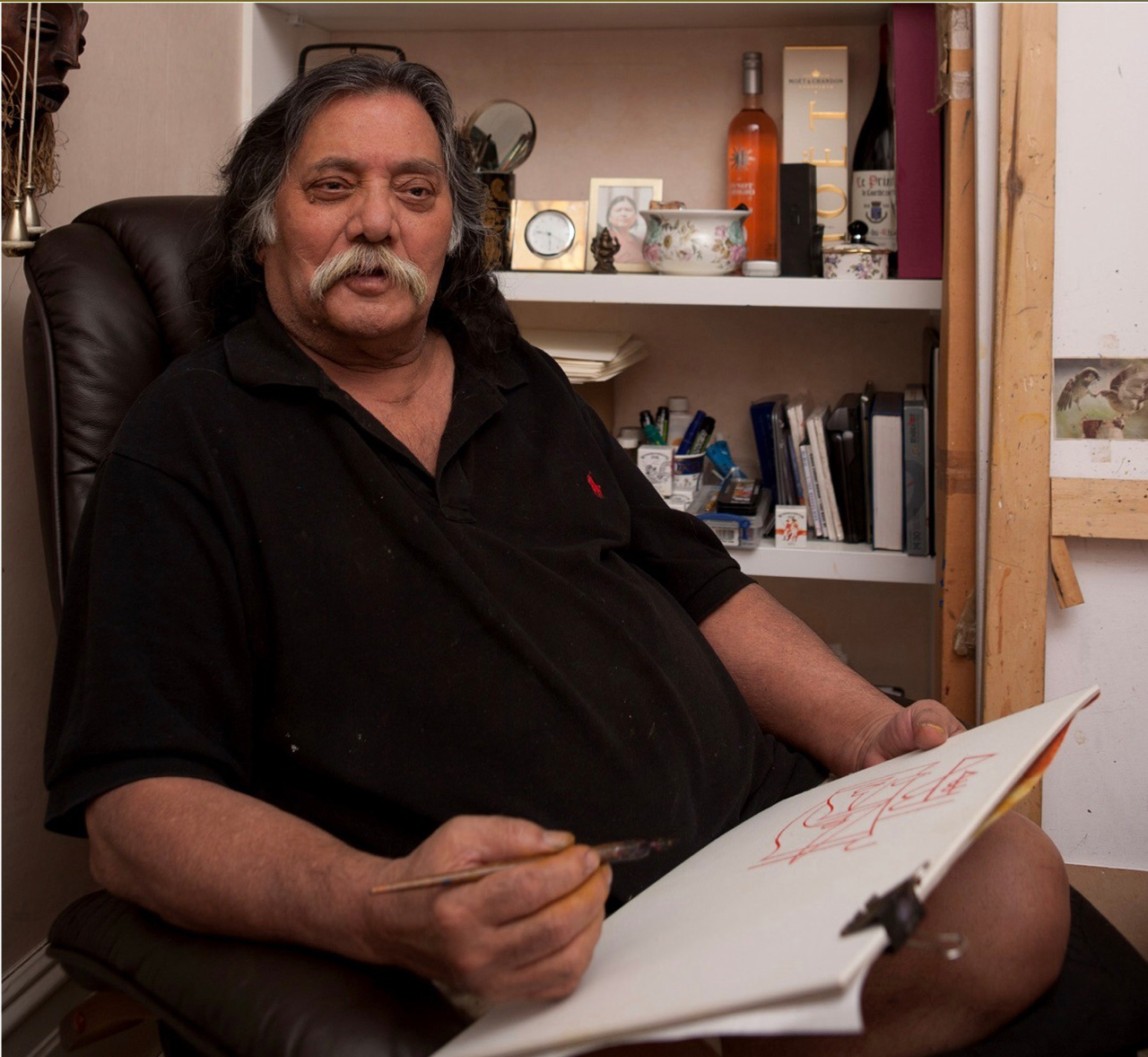LONDON: Legendary Pakistani painter Jamil Naqsh has been laid to rest in West London’s Alperton cemetery – over 7,000 miles away from the place where he grew up in Karachi and Lahore.
Rich tributes poured in from people belonging to every walk of life, right up to the President of Pakistan, and the art fraternity world over mourned the loss, as soon as the tragic news of the genius passing away, broke out on 16th May, this year. He was 80 years old.
Geo News met with the mourning family at the apartment in Maida Vale where Naqsh lived for the last sixteen years. It’s the same apartment where he painted, relaxed and met his friends - never stepping out.
The master artist bid farewell to the world at the St Mary’s Hospital, surrounded by his family. It is heart-breaking that the devoted artist wanted to paint while he lay unconscious battling for his life. His sister Shammi Ahmed, a painter herself, broke down in tears when she recalled how during his last days, Naqsh wanted to paint.
“He was in pain but physical pain was not relevant to him. He was restless because he had not painted, touched his brushes for several hours after being brought to the hospital. I saw his hands rising and moving as if painting”.
She said that this scene will haunt her for life and of course the absence of the family’s binding force.
Najmi Sura, Jamil’s life partner with whom he has lived for the last fifty years said: “Jamil was not only a great painter but also a great human being. He always said, ‘If a person is a better human being, he will also be a better professional’. He didn’t belong to a single community, culture or a country, he was the citizen of the world and a very kind human being. In Jamil’s world, there were no boundaries and for the very same reason his thoughts, ideas and art had reached beyond any known frontiers”.

At the apartment, those who had gathered to remember the late artist included his admirers, fans, friends and family. Naqsh had a very closely-knit family unit in which his children, nieces and nephew lived under the same roof as him and Najmi Sura.
They shared that for Naqsh painting was a way of life and he lived his life for art.
Sobia Naqsh, his niece, daughter-in-law and director of Jamil Naqsh Museum, recollected how she started working under his guidance in 1992 and has learned everything from him which led to the establishment of Jamil Naqsh Museum by his friends in 1999, which is a first-ever private museum established for a living painter in Pakistan.
Cezanne Naqsh shared that his father was a universal figure and one of the prophets of art, whose art will remain a source of inspiration and guidance universally, for the serious minds.
He said: “He was equally a loving father too and I dearly miss my discussions with him on art, architecture, philosophy and on life as a whole and all these discussions used to reflect the values and principles he dearly followed all his life and to much extent has inculcated in me as well.”
Naqsh’s daughter Mona said a vacuum has been created in her life which is impossible to fill. She said: “He’s no more with us but we feel him around, all the time. Every work that I ever created, I always longed to show it to him and get his appreciation. He was our guiding light and moral compass.”
Asim Shehzad, Naqsh’s nephew, said: “He was everything for me, he was my father, godfather.”
Jamil Naqsh’s nephew, Kashif Shehzad said: “Jamil Naqsh was not just an artist but an era in the art world which got transformed into art history....he shall always be remembered as a legend.”

Born on 25th December 1939, in Kairana, India, Jamil Naqsh often spent time alone. The large family house was filled with books, manuscripts and antique furniture. There were numerous quite corners for a small boy to hide. With the emergence of Pakistan in 1947, Naqsh then 8, accompanied his older brothers to Pakistan while his father remained behind. They were never to meet again. Raised without parents, he faced hardships, learnt to make decisions early in life. Deprived of money, Naqsh was never a pauper. The happiness and security of his early years remained integral facets of his dignity. He felt he gained a great deal of experience from the hardships he underwent and learnt the art of survival by constant struggle. “I inherited a great deal from my parents, I am a part of the great civilization of this subcontinent, that is why I feel, think, believe and live the way I do,” he said once.
As an art student, Naqsh was drawn to miniature painting. A dedicated miniaturist, Ustad Sharif was delighted with his impassioned young disciple. It was the discipline Naqsh was seeking and it became etched in his psyche that influenced his work through the decades to follow. He studied in Mayo school for two years and left without obtaining a diploma, he explained that it was knowledge he craved, not a certificate.
The young artist’s life was arduous. He was hard-pressed to find money for the materials he needed. He used classified pages of newspapers as surfaces for his work. Things began to change when Naqsh was offered a job in a leading advertising agency. For the first time, he had a regular income which enabled him to purchase much-desired art materials.
Through the years, countless opportunities to exhibit his work abroad have presented themselves but Naqsh had a very strong conviction in this regard.

Naqsh was honoured with the Pride of Performance in 1989, his friends established his private museum and the country paid homage to him with a retrospective exhibition, which was again the first ever for any living Pakistani painter. Surprising their friends and family, Jamil Naqsh and Najmi Sura bid farewell to Pakistan and migrated to London in 2003.
In London, he was welcomed as a maestro by the art fraternity and whilst living in the UK, he held approximately 30 solo exhibitions and was awarded Sitara-e-Imtiaz in 2014.
Throughout his life, Naqsh was labelled as a recluse, a term with which he never agreed. It was not that he rejected the world outside. He used to meet his chosen few, took great interest in reading newspapers, magazines and books, watching the news and browsing the internet. Jamil chose to live the way he did, so he could concentrate and dedicate his time to his work even though he could have enjoyed considerable celebrity status in Pakistan and elsewhere.
16th May 2019 marked the end of an era. The world bid farewell to the legend, Jamil Naqsh. The world has not only lost a great painter but a master and a genius. A man of inordinate vision and vast knowledge.
Jamil Naqsh had once penned the following lines to describe his own existence:
"Formed of well kneaded earth,
To return to the earth,
So that others can be born,
To confirm my being!"


